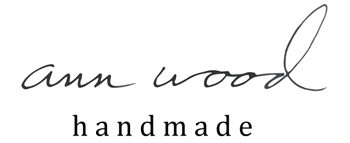*This tutorial is divided into two parts. This is part 1, part 2 is here. Please read both completely before beginning (start here with part 1).
The easiest way to understand how this little textile book is constructed is to watch the video of the last step – assembling it – first. After that we can talk about creating the pages etc.
Don’t see the video? – find it here.

My first two pages form the 2022 stitch book are above are above. You can check out the finished 2022 stitch book here. If you are stitching along with me this year stitch your pages before you assemble the book. I’m sharing the assembly tutorial now so you know where we are headed. Plus it’s a really cool way to make a textile book that you could use for all sorts of things.
Learn more about the stitch book project here
To create your pages you need 20 rectangles – 7 X 5.5 inches – you can use the page template download below to make them. Ignore the other marks on the pattern for now – just cut the rectangles. I’m using cotton and linen for the pages. Do not use heavy or thick fabric for your pages.

Stitch whatever you like on your rectangles, embroidery, collage, mess around, try stuff, meander. Leave about 1/2 inch margin all around the edge to make book assembly easy.
To make the book you will need these templates:
download the page template here
download the page chart here
how to assemble the book
Before assembling the book finish stitching on each of your 20 rectangles however you like – (I’m using plain fabric rectangles for the demonstration book today).

Clearly mark the – right side – of each of the 20 finished pages with its number using masking tape and a sharpie marker.
The book has 20 pages, including cover and back. There are five sections – each composed of 4 rectangles/pages.
3 sections have slots.
and 2 sections have tabs.
Use the page chart to layout the sections. For example The first section (a slot section) would look like this.
Use pages 6 and 1 for the front and 2 and 5 for the back of section one. We are looking at the right sides of the fabric.
And here it is assembled – front and back – page 5 is on the back of page 6 and page 2 is behind one. Use the chart and it all works out.
- section 1 – front
- section 1 – back
Below is section 2 – a tab section.
- section – 2 front
- section 2 – back
Lay out your 20 numbered pages in 5 sections following the chart and then use the instructions here to sew the slot and tab sections.
With all your sections sewn assemble the book.
assembling the book
Get set up by laying out out your pages just like the left hand column of the chart. Then follow along with the video at the top of this post.
PS – the designer of the slot tab method of binding books is Michael Budiansky – checkout the handmade books blog for more– it’s a cool site.









HI I am working along with you each day…..I just want to make sure I am following along correctly. We are stitching the pages FIRST then we will assemble….is that correct?
Thanks…have a blast with this project.
Raejean
Hi RaeJean – so glad you’re having fun with it and yes – from the post above:
“Before assembling the book finish stitching on each of your 20 rectangles however you like – (I’m using plain fabric rectangles for the demonstration book today).”
Oh! My goodness. Thank you for the instructions of how to assemble the book. Really enjoying the process of creating the book.
Great! I’m so glad to hear it!
Fantastic! Thank you so much!
Love this Miss Wood! Thank you for assembly video. Will start this weekend ❤️
This is marvelous! Thank you for sharing your creative ideas!!!
Genius, Ann! Thanks for the instructions!
Thank you for this wonderful textile book project. The assembling is amazingly clever.
Thank you! I love the slot tab binding method.
Oh this is so wonderful… thank you for the pattern and instructions. I love how your brain works!!!
Thank You, this is just what I have looking for. Cheers
That is genius! What an awesome project. You’re so generous sharing your patterns and tutorials. Thank you!
Wowza! Ingenious and looks like great fun!
This looks so fun, I may become an “overachiever”. Can’t wait to start.
I was doing the 100 day project as am embroidered stitch sampler in a beehive hexagon pattern, but it wasn’t really moving me….until I saw this! Not going to try and catch up, just somewhat starting over.
Thank you!
If I want to make fewer pages, will it work to assemble sections 1, 2, 3 as on your page plan? With page 1 being the cover ?
You should make a mock up and figure that out.
I am making my book with 12 pages only . ( Sections 1 , 2 ,3 = a slot , a tab , a slot )
I think it must work !
curious question…do you ever layer with Batting ?
I am halfway finished with my pages !!
Hi Deb – I did not use batting for the example book and don’t plan to use it for my finished pages – but you could certainly try it!
I have been ogling this project for a month. Today I BEGIN! Look at me being all brave.
Hi. I finally finished all 20 blocks. I understand how they work from your tutorial, but I’m having trouble picturing how you would put the four blocks together to form the tab block. If you have a picture or demonstration as to how you attached them, I’d appreciate seeing it. I’m going to try to do it on my own, but I don’t want to have to rip out seams with my embroidered blocks.
This is a fun project. I made mine to symbolize things that are important to me. Thanks for sharing it.
Hi Kathy,
Thanks so much and I’m so glad you’re having fun with the book.
I think you might have missed part 2 of the tutorial – there are full step by step instructions for assembling each type of section here:
https://www.annwoodhandmade.com/textile-book-tutorial-part-two-making-the-sections/
Just found your website!!! So fun Starting mine today!!! Thank you!!!!!
Found a bag of my husband’s old work jeans so I cut out 12 pieces. The I cut out 2 from an old torn sheet and assembled and sewed one slot set. I have 3 Miss thistle dolls in 2 sizes that I particularly like. I took them out and measured them against those assembled pages, discovering that I could probably make doll house pages for a fold out doll house book if I thought some more about it. So, I’m going to attempt to do that. If I am successful, I will let you know. I thought I might hunt up plastic canvas scraps to stiffen the pages with, in an attempt to make them stand up for play. I thought that the set of a book with a doll or dolls would make an interesting gift that would entertain on a long trip or in church or during an illness.
The 100 Days Embroidery Book was brought to my attention by my friend from Canada. I am from Cologne, Germany and look forward to the 15 min embroidery every morning. It stimulates my phantansy and keeps me busy beyond the 15 min.
Is it only a project for each individual or can the results be published for mutual exchange?
Thank you so much for this inspiration.
I just found this tutorial today. I am starting late but I’m sure I am going to enjoy it. I have been working on free style stiching. Hopefully this
can get me to commit more time and get on a schedule of relaxing. Thank you for your wonderful tutorial.